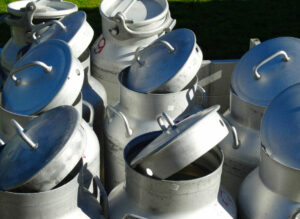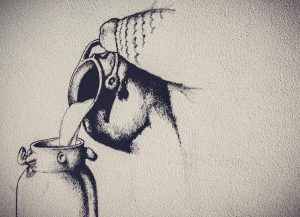Alvaro Garcia
Cow behavior has been the subject of much research in recent years with the intention to optimize their management and well-being. The development of automated devices that constantly monitor the cow’s activity has greatly helped form this perspective. Technologies that measure remotely cattle movements, temperature, rumination, and other physiological parameters have found their way from research facilities into commercial dairy farms.
Research on lying time, for example, has helped discern between bedding preferences and reduce the incidence of lameness. Cow comfort can thus play a very important role on cow well-being, longevity, and lifetime production. It can also be expected that eating and lying behavior changes as nutrient requirements change throughout the lactation.
A recent research trial (Munksgaard et al., 2020) conducted in Denmark evaluated dairy cow daily changes in lying and eating and number of steps during lactation and their relationship with milk yield, body weight, and feed intake. Data were obtained from 255 primiparous and multiparous Jersey and Holstein cows between 5 and 200 days in milk (DIM). Cows were in a loose-housing system divided in two groups, with one breed in each group. There was at least one cubicle per cow, bedded with geotextile mattresses, topped with a thin layer of a mix of wheat straw and sawdust. Feed consisted of a pelleted concentrate delivered at the milking robot and ad libitum access to a partial mixed ration (35:65 concentrate:forage ratio). The partial ration consisted on corn silage, grass-clover silage, rapeseed cake, wheat, dried sugar beet pulp, soybean meal, and mineral-vitamins. Lying time and steps were recorded with a leg-mounted activity pedometer and ad libitum feed intake of the partial mixed ration was automatically recorded from the feed bins. Milk yield and live weight were recorded daily at milking time by the milk robot.
Results of this experiment showed Holsteins spent more time lying and eating than Jerseys, whereas the latter had more steps (25–37%). There was also a difference between lactation number. Cows in their first lactation spent less time eating and walked more than older cows. There were also differences depending on the month of the year. During the winter (February) daily lying time was on average approximately 1 hour longer than the shortest lying time, which was observed in late summer (August). Multiparous cows from both breeds spent more time lying than first parity cows. The difference was that at the beginning of the lactation multiparous cows decreased lying time, whereas primiparous cows increased it. Older cows tended to increase duration of lying later in lactation than their younger counterparts.
As could be expected there was a slight correlation between milk yield and dry matter intake, and between changes in eating time and rate of eating. Holstein cows that had their lying time increased also has an increase in eating rate. This experiment confirmed the importance of cow comfort and lying time on enticing eating behavior and as a result milk production.
Reference
Munksgaard, L., Weisbjerg, M.R., Henriksen, J.C.S., Løvendahl, P. 2020. Changes to steps, lying, and eating behavior during lactation in Jersey and Holstein cows and the relationship to feed intake, yield, and weight. Journal of Dairy Science.
© 2020 Dairy Knowledge Center. All Rights Reserved.[/vc_column_text][/vc_column][vc_column width=”1/6″][/vc_column][/vc_row]











